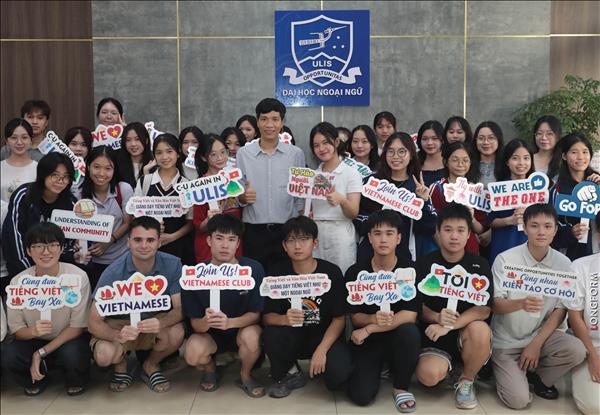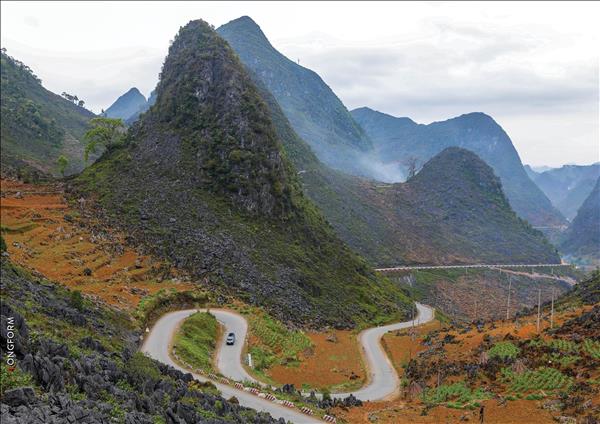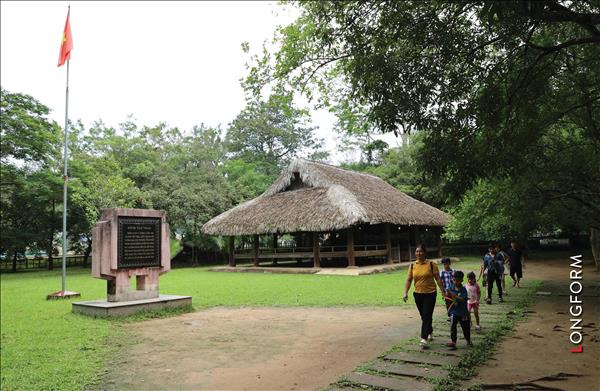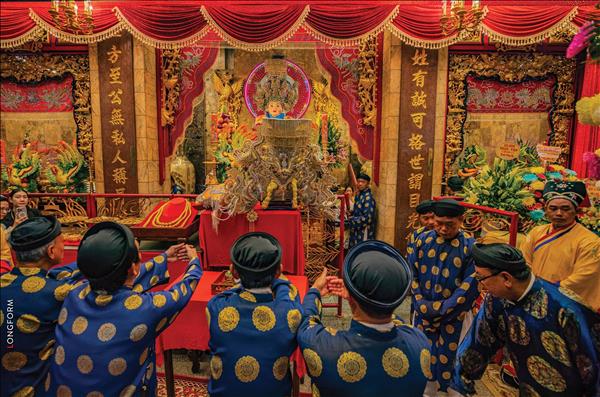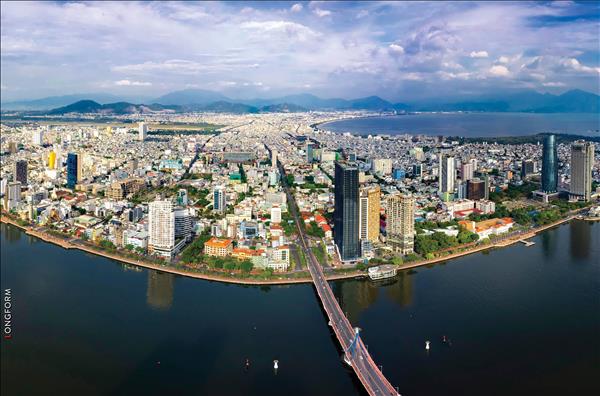Cuc Phuong is the first national park of Vietnam. With an area of 22,000 hectares, it is also one of the jewels of the world’s forest ecology. For 3 consecutive years (2019-2021), it has been honored amongst Asia’s notable national parks by the World Travel Awards. For nearly 60 years since its establishment, Cuc Phuong’s preservation work has made great achievements and the national park itself is internationally recognized as the largest wildlife protection area in Southeast Asia.
Biodiversity in Cuc Phuong National Park
We talked to the director of Cuc Phuong National Park Nguyen Van Chinh soon after the news of the World Travel Awards. The conversation has shed light on Cuc Phuong’s remarkable recognition recently.
With its limestone Karts topography, Cuc Phuong’s primary forest has value because of its archeology, paleontology and geology. Many archaeological sites have been discovered here, providing valuable insight into human history. The most notable of these are Con Moong cave and Ancient Man cave. In addition, many dry caves have been discovered and are now used for tourism hotspots. An initial survey also shows that Cuc Phuong mountains and forests still have many caves waiting to be explored by scientists and explorers.
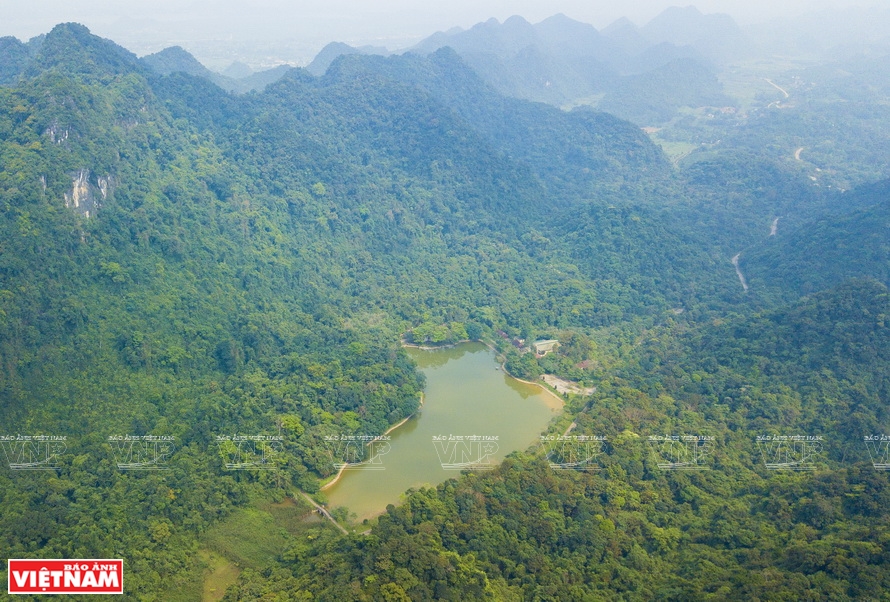 For 3 consecutive years (2019-2021), Cuc Phuong has been honored amongst Asia’s notable national parks by the World Travel Awards. Photo: Minh Duc Officers from Cuc Phuong's endangered primate rescue center take care of primates before releasing them back into the wild. Photo: Minh Duc 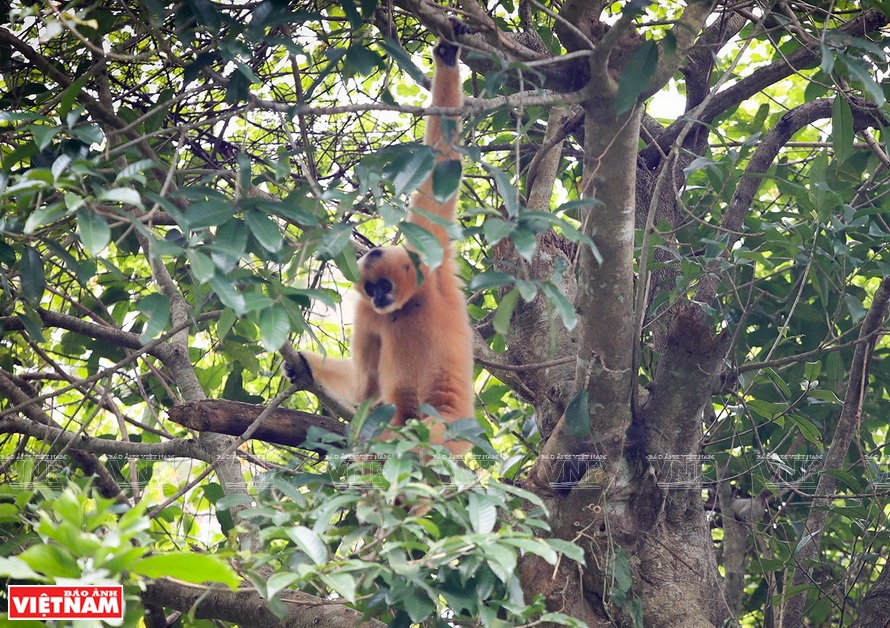 Primates in their natural environment in Cuc Phuong National Park. Photo: Minh Duc 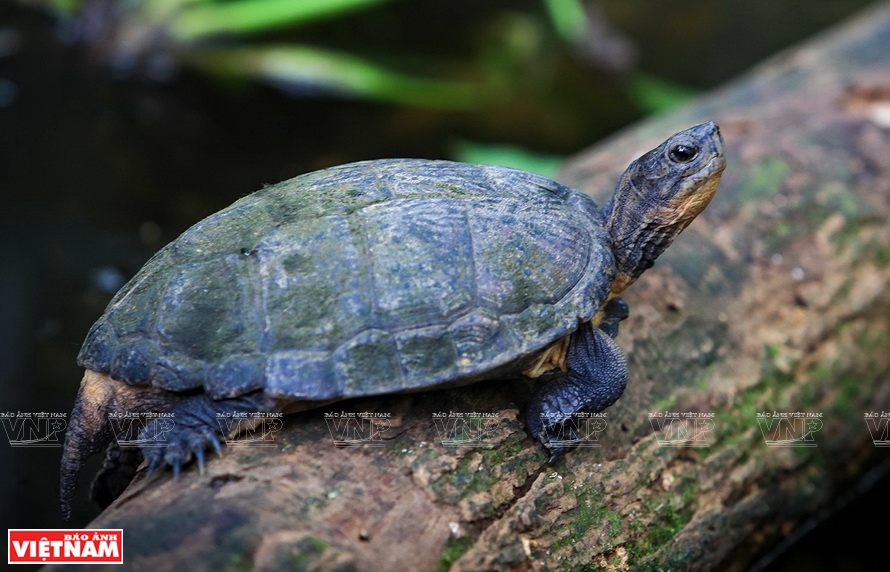 A Pulkin land turtle in Cuc Phuong National Park. Photo: Ninh Manh Thang 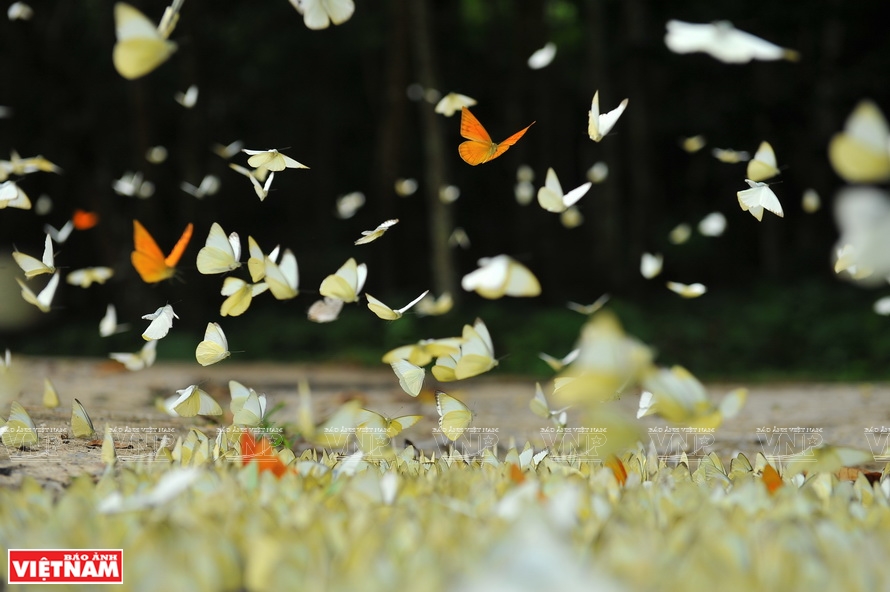 Going to Cuc Phuong National Park from April - May every year, you will be immersed in the fairy like scene when butterflies migrate here. Photo: Minh Duc The proboscis civet lives in a natural environment in Cuc Phuong National Park. Photo: Minh Duc  The 1000-year-old tree of cho chi(parashorea chinensis) at Cuc Phuong National Park. Photo: Truong Huy A blade-toothed fossilized reptile over 200 million years old in Cuc Phuong primeval forest. Photo: Truong Huy Officers from Cuc Phuong turtle conservation center examine individual turtles before releasing them back into the wild. Photo: Minh Duc |
Cuc Phuong National Park is a tropical forest characterized by the ecological transitional between limestone mountains and common mountains. The forest area is mainly composed of layers of an evergreen tropical forest in the lowlands (under 500m) and low mountains (under 500m) that came from rocks and limestone. These types of flora and fauna exhibit the characteristics of karst topography and biodiversity.
| Cuc Phuong National Park is a nature reserve in an area that includes three regions of the Northwest, the Red River Delta and the North Central. It is nestled between the three provinces of Ninh Binh, Hoa Binh, and Thanh Hoa. |
Cuc Phuong National Park has long served as a research center for many conservation organizations, both national and international. According to surveys, Cuc Phuong has 2,234 floral species of 931 genera and 231 families. Included in these are 430 species of medicinal plants and 229 species of edible plants. 57 species are listed in the Vietnam Red Book of endangered species and also in the IUCN Red Book.
The fauna in Cuc Phuong is also very rich and diverse. Regarding vertebrates, there are 669 species from 120 families and 35 orders. These include 138 species of mammals, 337 species of birds, 80 species of reptiles, 48 species of amphibians, and 66 species of fish.
Cuc Phuong rivers and streams are home for some nowhere-seen-before species namely Niet Cuc Phuong fish (Pterocrypis cucphuongensis) and Cuc Phuong ear lizards (Tropidophorus cucphuongensis). Invertebrates in Cuc Phuong have 1,899 species from 169 families, 33 orders, 6 classes and 3 phyla. The insect class accounts for a large proportion such as 454 species of beetles, 378 species of lepidoptera and 314 species of membranous wings.
According to Nguyen Van Chinh, most of the community living around Cuc Phuong forest are Muong, an ethnic group with long-standing culture contributing greatly to the cultural identity of Vietnam. They have a strong connection to the forest spiritually and that connection drives them to protect the forest along with the management board of the National Park. Anyone who comes to Cuc Phuong can feel the pristine beauty of the primary forest.
Mysterious “labyrinth”
Many domestic and international tourists going to Vietnam's first national park are astonished by Cuc Phuong’s vastness and mysterious atmosphere they call a “labyrinth of wonder”. As explained by Nguyen Van Chinh, “A million-year-old primary forest like Cuc Phuong certainly carries hidden and interesting things that await exploration. The limestone is barren, but growing on them is an ecosystem with thousands of different species of animals and plants. Obviously, it's a mystery and a wonder!”
Also, according to Chinh, who is determined to protect the diverse and rich ecosystem of Cuc Phuong, the Management Board of the national park has worked synchronously on three pillars. These are, combining forest protection with biodiversity conservation, fostering scientific research and international cooperation on conservation and promoting ecotourism in line with environmental education.
Floral conservation has been carried out in Cuc Phuong National Park since 1985, with the establishment of a botanical garden of 167 hectares. The facility so far has gathered 811 species. Cuc Phuong Botanical Garden is considered the first methodically built botanical garden in Vietnam.
 Cuc Phuong National Park rangers regularly do their inspections. Photo: Ninh Manh Thang According to the investigation results of the Frankfurt Animal Welfare Association in Vietnam, the white-legged langur is only found in Vietnam with more than 200 of the animals, distributed over 18 separate points in Cuc Phuong National Park. Photo: Minh Duc Bears caught in illegal wildlife trading are cared for at Cuc Phuong bear conservation center before being released back into the wild. Photo: Minh Duc Officers from Cuc Phuong turtle conservation center help rare turtles give birth in a semi-wild environment. Photo: Minh Duc Officers from Cuc Phuong's endangered primate rescue center take care of the rescued primates. Photo: Minh Duc Cuc Phuong National Park officials participate in the re-release of wild animals after rescuing them. Photo: Ninh Duc Phuong A pangolin specimen is on display at the Cuc Phuong Museum. Photo: Minh Duc 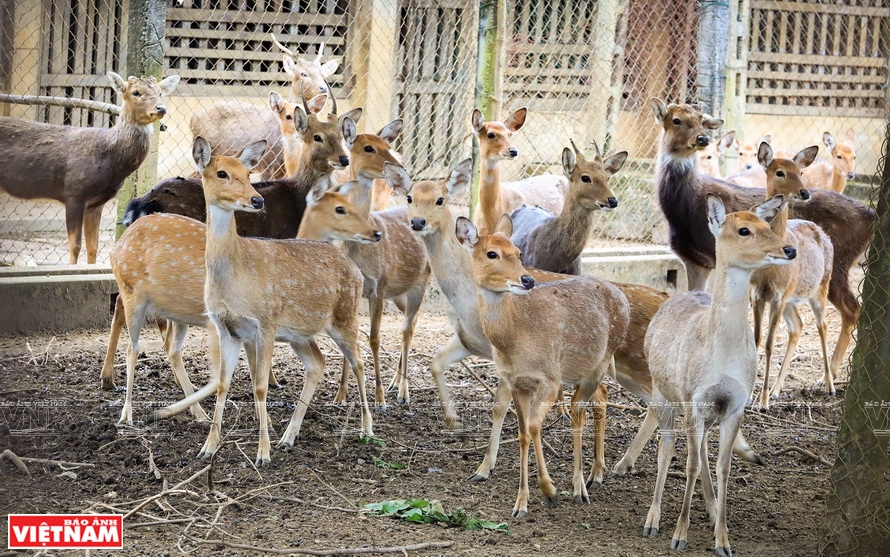 Deer are taken care of in Cuc Phuong National Park. Photo: Ninh Duc Phuong International tourists enjoy watching butterflies in Cuc Phuong National Park. Photo: Minh Duc Cuc Phuong Museum is located on the grounds of Cuc Phuong National Park. Photo: Minh Duc The Cuc Phuong Conservation Project began in 1996 with funding from the Britain's BP & ARA (a German NGO). Photo: Minh Duc |
Currently, Cuc Phuong National Park has 3 conservation programs. These include endangered and rare primate rescue, carnivore and pangolin conservation and conservation of freshwater turtles and some other wildlife (deer, pheasants and monkeys). Currently the national park is protecting 64 species with 2,700 individuals.
Cuc Phuong has various wildlife rescue centers and programs. These rescue centers and programs are mostly located around the garden gate so visitors can easily visit them and learn more about Cuc Phuong’s conservation work. Such promotion is currently strongly pushed, especially in cooperation with local schools to improve environmental education for students.
Meanwhile, ecotourism is considered the main development direction of Cuc Phuong National Park. It is also the development strategy that Ninh Binh province has chosen for Cuc Phuong towards 2030.
If one, by any chance, can visit Cuc Phuong National Park after May, they will find themselves in a dreamy land of butterflies. Cuc Phuong during these days will turn into a “butterfly festival” that has more than 400 species according to records.
| Since July 2021, Cuc Phuong National Park has introduced the “Going home” tour for visitors who want to experience accompanying the park’s staff in returning rescued wild animals to nature. This tour encourages visitors to become “ambassadors” spreading the message of nature conservation. |
Community-based tourism - the model that has developed strongly in Vietnam in recent years - has been in operation in Cuc Phuong since 2009, 2010. This is especially true in Muong villages located in the buffer zone such as Trac village (Lac Thinh, Yen Thuy, Hoa Binh communes) and Khanh village (An Nghia commune, Lac Son, Hoa Binh). Tourists will have a chance to discover the unique culture of the Muong, participate in cultural exchanges and learn about indigenous customs.
As Vietnam is focusing on recovering tourism damaged by the COVID-19 pandemic, Cuc Phuong National Park has designed, introduced and operated various new ecotourism products.
“Since August, the park has organized many tourism programs such as, the Revival Journey which is a community-based tour for nature-lovers to join with the park personnel in our efforts to rescue, care for and conserve endangered and precious wildlife species. The “One-day experience and learning trip for local students” and volunteer programs and the “Going home” tour are also being looked forward to. Realizing the dual goals under the direction of the government, we are looking forward to welcoming more and more visitors so that visiting Cuc Phuong will always be “green steps, peaceful lifestyle and fighting against COVID,” said Chinh.
| Nguyen Van Thai - Director of the Vietnam Center for Wildlife Conservation headquartered on the campus of Cuc Phuong National Park, has been awarded the Goldman Environmental Prize in 2021 - a prestigious award for environment, also known as the “Green Nobel.” |
Photos: Ninh Duc Phuong, Minh Duc,
Ninh Manh Thang & Truong Huy
Translated by Hong Hanh

